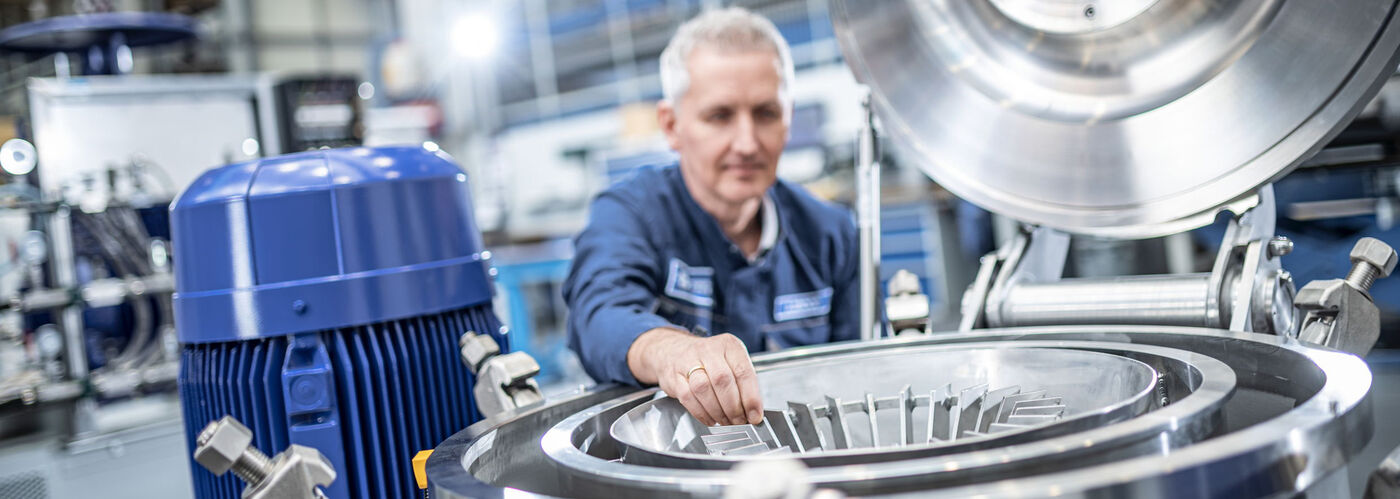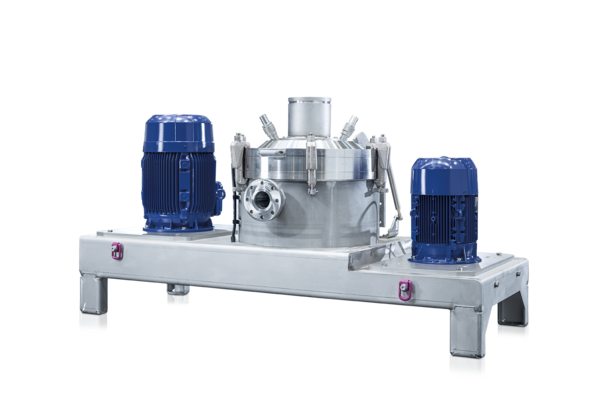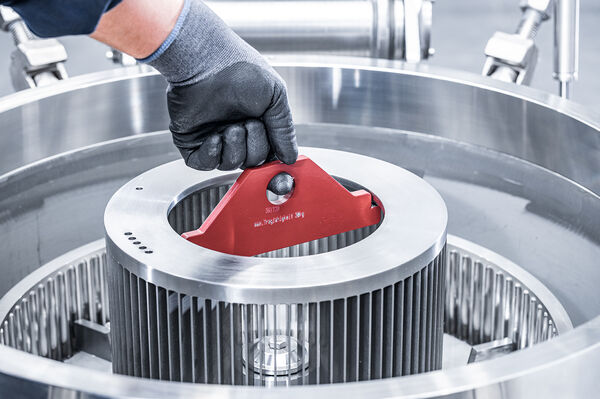The mode of operation of the ADM is basically the same as that of the tried and tested ACM classifier mill. "Firstly, the material to be ground is fed into the ADM pneumatically or via a screw conveyor. Size reduction is then achieved by the impact of the ground material on the rotating grinding elements and on the stationary grinding track," explains Daniel Droop. With impact edge speeds of up to 135m/s, finenesses of d97 below 7 µm are achieved. The processing air drawn through the mill by the downstream fan captures the material to be ground and guides it along the guide vanes of the guide cone in the grinding chamber.
The machine is characterised by its integrated dynamic classifier. The product-air mixture rectified by the guide vanes is fed evenly to the rotating classifier. In the classifying area, separation into coarse and fine material takes place due to two opposing forces and the different mass of the particles. The coarse product is rejected by the classifier wheel, returned to the grinding zone and is ground again. The fine product passes through the classifier wheel and exits the grinding chamber. The separation limit is set via the speed of the classifier wheel and can also be infinitely adjusted during grinding operation.






Polecane artykuły